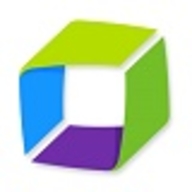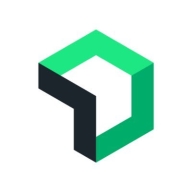


Find out what your peers are saying about Datadog, Dynatrace, Splunk and others in Application Performance Monitoring (APM) and Observability.
ROI is hard to specify; however, incidents like impending ransomware attacks highlight its value, though those are exceptional events.
They have a good reputation, and the support is commendable.
The technical support from Dynatrace is excellent.
For Dynatrace tech support, we have a dedicated team here, which is easily reachable.
Issues that could be solved quickly sometimes take longer because they go around in circles.
They often treat issues in isolation, not considering how one problem might relate to another.
When I was working directly with Microsoft at TCS, my first company, the support experience was quite smooth, and we received solutions promptly.
If it's an enterprise, increasing the number of instances doesn’t pose problems.
The scalability of SCOM, meaning its ability to adapt to our needs, is excellent because we are working with SQL systems and multiple servers.
Generally, all are stable at ninety-nine point nine nine percent, but if the underlying infrastructure is not deployed correctly, stability may be problematic.
There have been no stability issues with Dynatrace.
I have not seen many errors or frequent data loss because once we have installed the agent on the system and have the details, not much manual intervention is required.
SCOM is a bit unstable lately, primarily due to a lack of resources.
The definition of enterprise is loosely used, however, from a holistic security perspective, including infrastructure, network, ports, software, applications, transactions, and databases, there are areas lacking, especially in network monitoring tools.
I'm specifically looking at AIOps and how we can monitor AIOps-related things, considering we have LLMs and all that stuff.
They have been the pioneers from inception, and they remain at the top of the Gartner chart.
Email alert customization is limited; it cannot be tailored much, which makes the system more rigid than optimal.
I would like to see a software-as-a-service version in Azure to eliminate the need for on-premise infrastructure.
SCOM is likely to be phased out in favor of more compatible tools like Icinga for application monitoring or when moving to cloud solutions like CloudWatch and Azure.
It would be beneficial to have a summary on one single dashboard, as there are many more possibilities available.
Dynatrace is known to be costly, which delayed its integration into our system.
If I would ask you to rate price from 1 to 10, where 1 is cheap and 10 is expensive, how many points would you give to it?
The integration with Power BI for generating detailed reports is a standout feature.
Dynatrace's AI-driven Davis engine absolutely helps identify performance issues by showing root cause analysis for us up to 200%; whatever is integrated, if it is visible, it can stitch and show.
Graduation features offered by Dynatrace provide a single view and can connect with many other monitoring systems.
Using New Relic speeds up troubleshooting and resolution, giving us a clearer picture of where issues are, thus saving time and effort.
It assists me in detecting server downtime and delivers basic performance monitoring right out of the box.
The most valuable feature of SCOM is its monitoring capability, and we have integrated SCOM with Grafana, which is a dashboarding tool.
SCOM integrates several systems and offers correlation features, like setting up everything around Active Directory or DNS.
| Product | Market Share (%) |
|---|---|
| Dynatrace | 8.8% |
| Datadog | 7.2% |
| Sentry | 5.8% |
| Other | 78.2% |
| Product | Market Share (%) |
|---|---|
| New Relic | 5.1% |
| Dynatrace | 8.8% |
| Datadog | 7.2% |
| Other | 78.9% |
| Product | Market Share (%) |
|---|---|
| SCOM | 9.0% |
| ServiceNow IT Operations Management | 17.8% |
| OpsRamp | 14.5% |
| Other | 58.7% |



| Company Size | Count |
|---|---|
| Small Business | 77 |
| Midsize Enterprise | 50 |
| Large Enterprise | 287 |
| Company Size | Count |
|---|---|
| Small Business | 65 |
| Midsize Enterprise | 49 |
| Large Enterprise | 60 |
| Company Size | Count |
|---|---|
| Small Business | 16 |
| Midsize Enterprise | 22 |
| Large Enterprise | 54 |
Dynatrace is an AI-powered software intelligence monitoring platform that accelerates digital transformation and simplifies cloud complexities. Dynatrace is an entirely automated full-stack solution that provides data and answers about the performance of your applications and deep insight into every transaction throughout every application, including the end-user experience. By modernizing and automating enterprise cloud operations, users can deliver an optimal digital experience with higher quality software to customers faster.
Dynatrace offers an all-in-one automated artificial intelligence solution that brings together application performance, cloud and infrastructure, and digital experience monitoring. Dynatrace accelerates performance-driven results through operations, development, and business teams with a shared metrics platform. In addition, users are provided a full-stack monitoring experience with three patented technologies:
What does Dynatrace offer?
Dynatrace redefines how organizations monitor their digital ecosystems. The solution offers:
Reviews from Real Users
Dynatrace is the only solution that provides answers to organizations based on deep insight into each user, transaction, and organization's environment.
Barry P., a managing performance engineer at Medica Health Plans, writes, "With Dynatrace, we have synthetic checks and real-user monitoring of all of our websites, places where members and providers can interact with us over the web. We monitor the response times of those with Dynatrace, and it's all integrated into one place."
A consultant at a tech service company notes, "A feature that's one of the highlights of Dynatrace is the AI. The second most valuable feature is OneAgent. Between infrastructures, applications, operating systems, you can deploy with just a single agent and can practically install and forget about it."
New Relic offers real-time application monitoring and insight into performance bottlenecks. Its customizable dashboards and APM integration provide efficient operational support, while server performance alerts ensure quick issue detection.
New Relic provides comprehensive monitoring of application performance, tracking bottlenecks across databases and front-end components. Users employ it for server and infrastructure monitoring, as well as analyzing key metrics such as CPU and memory usage. The solution's ability to integrate with tools like PagerDuty enhances incident management capabilities. However, users have expressed a need for improvements in query language simplicity, more detailed historical insights, and better mobile app monitoring support.
What are New Relic's most important features?In industries like e-commerce and financial services, New Relic supports application performance monitoring to enhance user experience and system reliability. Organizations leverage its insights for optimizing performance, particularly in server operations and infrastructure management. Its ability to monitor API failures through synthetic monitoring is crucial for maintaining high service levels.
SCOM (System Center Operations Manager) is a cross-platform data center monitoring and reporting tool that checks the status of various objects defined within the environment, such as server hardware, system services, etc. The solution allows data center administrators to deploy, configure, manage, and monitor the operations, services, devices and applications of multiple enterprise IT systems via a single pane of glass. It is suitable for businesses of all sizes.
SCOM Features
SCOM has many valuable key features. Some of the most useful ones include:
SCOM Benefits
There are several benefits to implementing SCOM. Some of the biggest advantages the solution offers include:
Reviews from Real Users
Below are some reviews and helpful feedback written by PeerSpot users currently using the SCOM solution.
A Manager at a financial services firm says, “The feature I like most about SCOM is that it is easy-to-use. I find it very user-friendly. I also like the knowledge base which it has. You can find the resolution to questions or issues directly within the SCOM itself. It will alert you with a recommendation of what you need to do at the same time. This sort of self-diagnosis or prompting is one of the great values you get from SCOM compared to other solutions.”
PeerSpot user Zahari Z., Information Technology Auditor at a financial services firm, mentions, “Availability monitoring is the feature I have found most valuable, as well as the capacity and ability to send notifications. There is a mechanism to set up a notification from the SCOM and whenever there is a drop in the availability the notification alerts not only for availability but for other issues as well. You can align thresholds according to the speed of your environment and you can have a threshold related notification, which is one of the useful features.”
Bill W., Sr. Systems Engineer at Arapahoe County Government, comments, “ I like some of their newer features, such as maintenance schedules, because SCOM records SLA and SLO time. When we patch, things are automatically put into maintenance mode so that the numbers for our systems being down, do not count against us.”
A Project Manager at a tech services company explains, “The feature I have found most valuable is the book feature. While we run the Sprint one we can add some setups for multiple sprints.”
A Systems Engineer at an educational organization states, “Because it's Windows-based, it actually reports quite well. It reports everything you can think of on the Windows server and allows you to monitor anything. It's excellent for those in the Windows world as it's very good at it.”